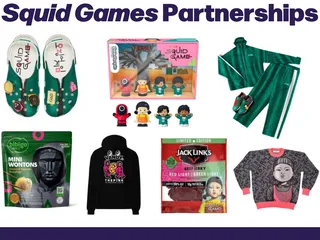
Strategic Brand Partnership Ideas Based on Your Industry
Fostering a great marketing partnership is like finding a dance partner who moves with you step in step but also brings their own style to the floor. When your brand teams up with another, you’re communicating trust, reaching new audiences and creating cost-effective content. Whether B2B or B2C, almost every business can engage in strategic partnerships, whether that means co-hosting a webinar, launching co-branded content or collaborating on a bundled product giveaway. It’s about more than sharing eyeballs and splitting costs—it’s about multiplying your impact.

Why Marketing Partnerships Matter
Brand partnerships build credibility and social proof like nothing else. Think about it like B2B influencer marketing; when another brand collaborates with your brand, you tap into their brand loyalty—without doing the hard work to earn it from scratch. And beyond visibility and validation, strategic partnerships can potentially improve your revenue by driving new leads and optimizing your search presence.
As we continue to evolve from an “advertiser-controlled economy” to a “creator-controlled economy,” partnerships will only become more and more important to successful brands.
How to Partner Up With Other Brands
The potential impact of a strategic marketing partnership is pretty undisputed, but the question that most brands still have is, “How?” There’s no clear roadmap on how to develop a partnership. That’s because it’s a relatively underused strategy in smart marketing plans. Business managers often see it as a more difficult tactic because you can’t “own” the outcome; you have to rely on other brands to ensure success. However, our experts have found that it’s a lot easier than most clients think!
In all likelihood, your company has partnerships it can tap into already! Have you been on someone else’s podcast? Do you have vendors or suppliers? Are there other businesses in your office building? Consider hosting a rapid-fire brainstorm in an existing team meeting to talk about relevant professional contacts you currently have.
Once you create a list of possible partners, narrow them down with the following metrics:
- Is it a non-competitive brand? It should go without saying, but you don’t want to partner up with a company that may take away your business rather than enhance it.
- Does it have a similar audience? You shouldn’t have the same product or service, but you can share audience needs and affinities.
- Do you have a personal connection? Having a “person on the inside” who can champion a partnership is critical. Don’t start the relationship from scratch unless you have to.
- Is the relationship obvious? Even if two brands share similar audiences, if the connection isn’t clear to the consumer, then you’ll have a hard time convincing them to take action.
What Brand Partnerships Are Possible
Whether you’re running down the list of current business relationships or ideating newfound ones rife with partnership potential, it’s always nice to have some direction. As a marketing agency that loves to make connections that elevate our clients, we did you a solid and came up with a few ideas to get you started.

Kids & Toys
- Children’s content creators: Partner with parent influencers on YouTube or TikTok to co-create play-based learning content.
- Educational institutions: Team up with preschools or enrichment programs to offer branded play kits that double as learning tools.
- Retail collabs: Co-brand limited-edition toy lines with children’s apparel companies for bundled sales or gift sets.
Health Technology
- Wearables and fitness apps: Integrate your platform with established fitness or sleep-tracking apps for mutual data-driven insights.
- Corporate wellness programs: Partner with employers that offer health benefits to provide your tech as part of preventive care packages.
- Academic research institutions: Collaborate on clinical studies to validate efficacy and build credibility with peer-reviewed data.
Food & Beverage
- Hospitality groups: Pair with boutique hotels or trendy restaurants to feature your products as part of seasonal menus or minibar offerings.
- Subscription boxes: Collaborate with snack, beverage or lifestyle boxes to reach niche consumer audiences. (Subscriptions are all the rage right now!)
- Event organizers: Co-sponsor festivals, farmers' markets or tastings where your products are sampled alongside complementary product brands.
Health & Wellness
- Gyms and studios: Partner with yoga, Pilates or boutique fitness studios to offer product trials or bundled memberships.
- Mental health platforms: Co-develop resources, content or toolkits that tie physical and mental wellness together.
- Insurance companies: Negotiate perks for members who adopt your wellness solution (e.g., discounts, rewards points).
Beauty
- Small fashion businesses: Cross-promote beauty products with apparel launches, using photoshoots and co-branded campaigns to generate excitement.
- Spas and salons: Supply exclusive products for treatments or retail shelves, turning every service into a sampling opportunity.
- Sustainable packaging partners: Co-innovate with eco-friendly suppliers to highlight green values and capture conscious consumers.
Law
- Financial advisors: Partner with accountants and wealth managers to offer bundled services for business clients.
- Tech startups: Collaborate with software-as-a-service (SaaS) or compliance tools to provide clients with seamless legal-tech integrations.
- Industry associations: Co-host webinars or write thought-leadership content with professional groups, positioning your firm as the go-to authority.
Who Can Elevate My Brand Partnerships
If you need support in elevating your strategic partnerships, we would love to be your go-to partner agency. After all, “elevate” is in our name, and “partnership” is always on our minds. We’ve hosted start-to-end events with smart vendor partnerships and guided clients through making and managing successful business relationships for over 16 years. The best marketing is word of mouth, so finding other companies to sing your praises is one of the most strategic marketing moves you can make.
Reach out to our experts to start connecting with other brands today!
Cody H. Owens,
Content Director